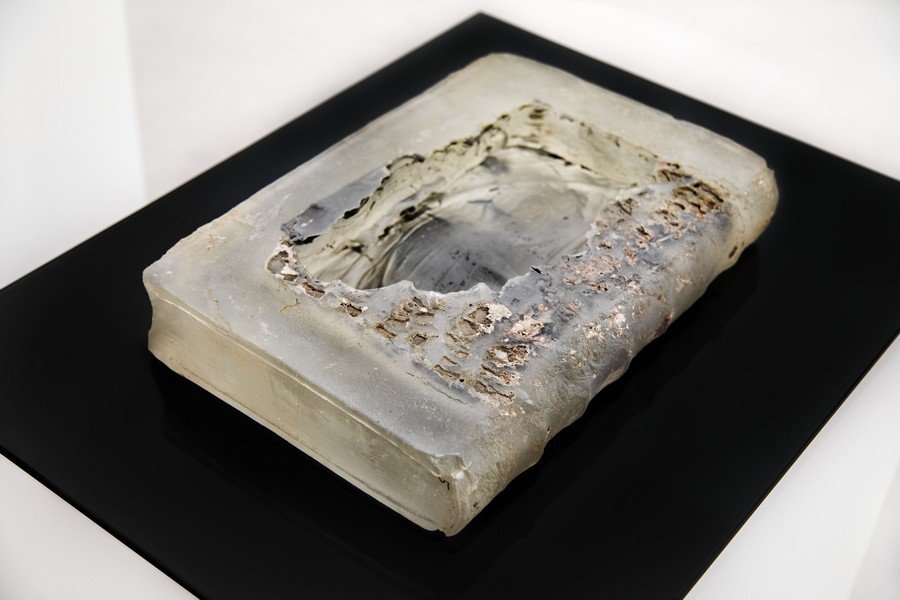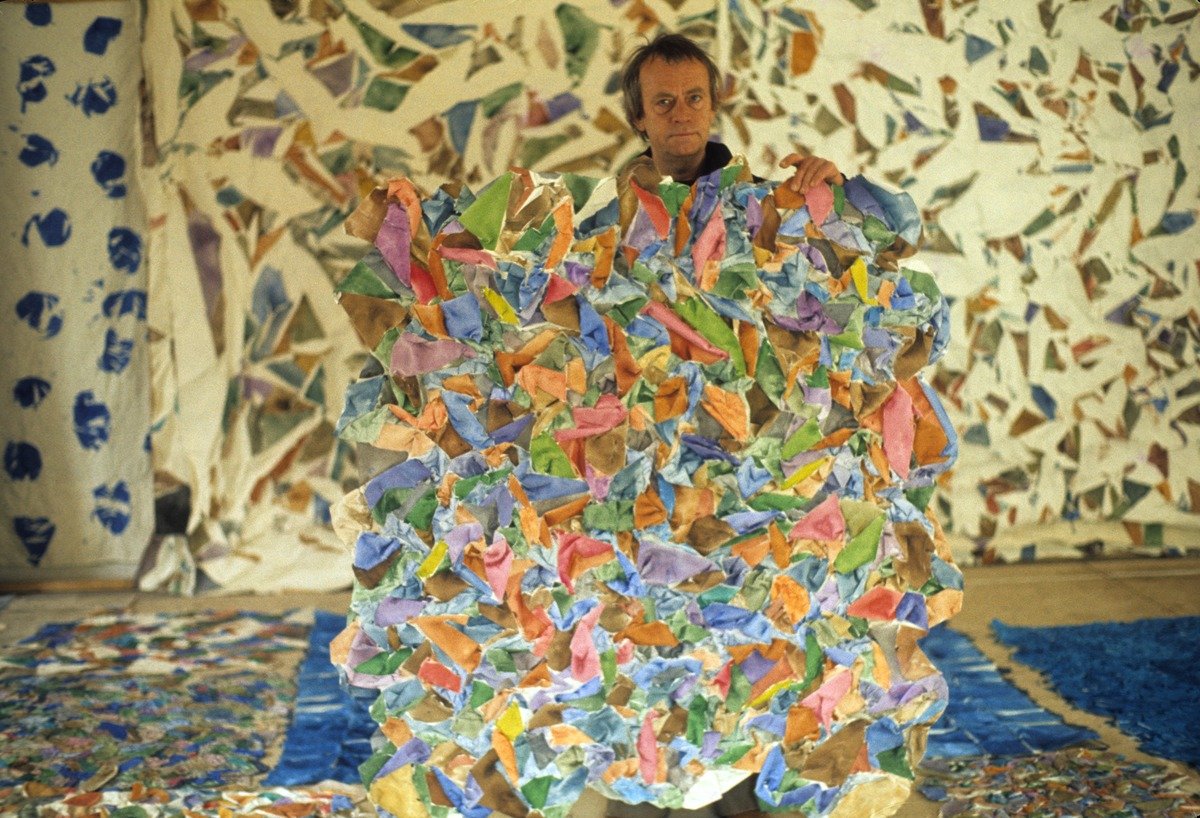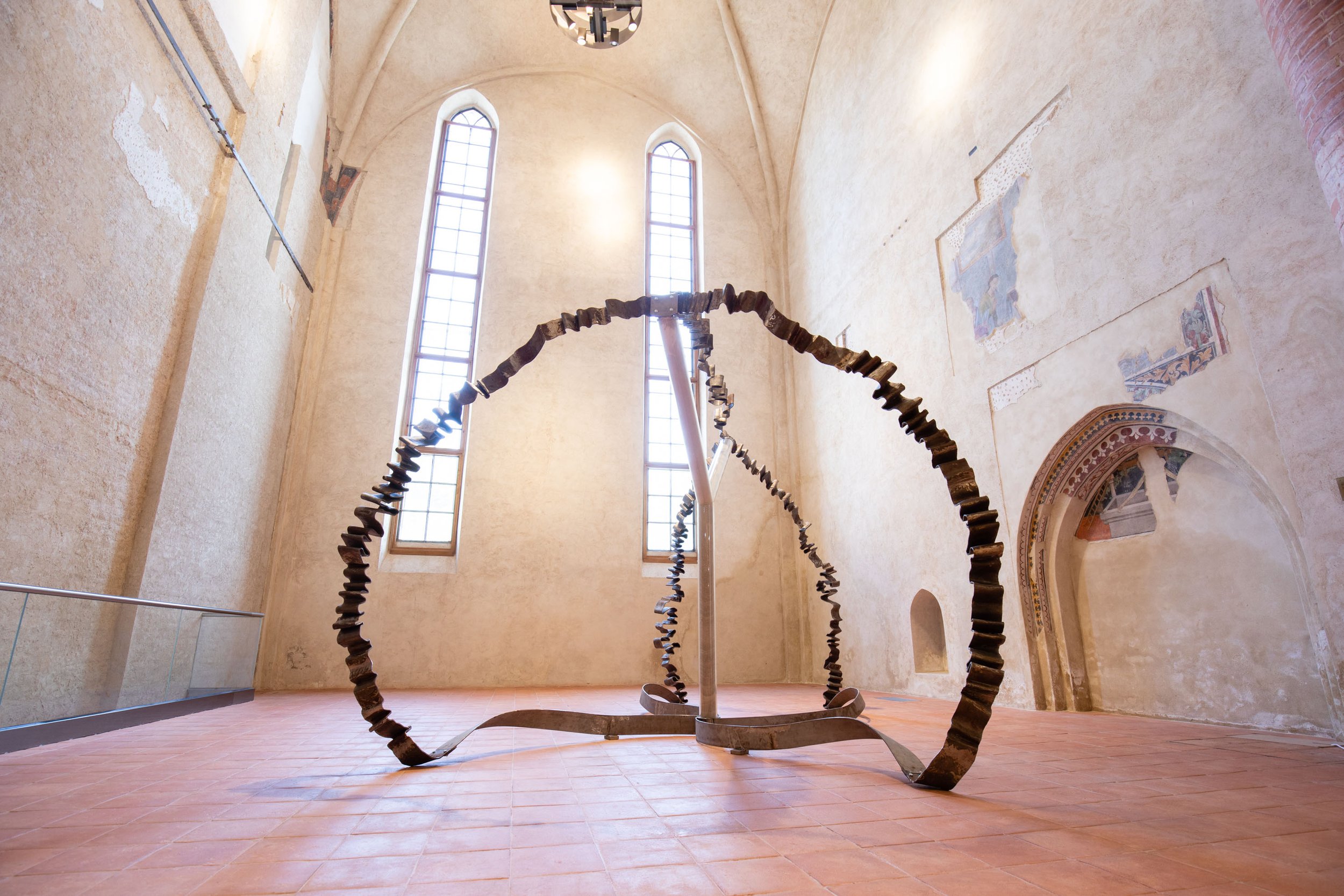Figure Without Mimesis
Gunnar Berge
Georges Didi-Huberman’s close analysis of medieval theologico-philosophical peculiarities in Fra Angelico: Dissemblance et figuration (1990) may come as a surprise in a production otherwise concerned with Walter Benjamin’s analyses of modernity, Bataille’s transgressive forms, Freud and Charcot’s studies of hysterical women, and Carl Einstein’s readings of African art. Religious frescoes and altarpieces of the late medieval piety in the San Marco convent in Florence have little to do with the events in art during the last hundred years, and according to traditional academic thought, the one and the same person cannot be an expert on both old and new art.
If the topic of the book seems remote from our present concerns, it is first and foremost due to our way of thinking the relationship between art and history: that our habitual thinking places the artworks in their established epochs, lending them an identity positioned within a fixed view of developing progression. Specialists view the art of Fra Angelico through pre-defined categories, forming expectations of what they will find. Didi-Huberman claims that such an aprioristic approach “leads the eye to close itself to surprises” (9). His way of addressing early artworks is less concerned with suggesting alternative interpretations of what we see than with pointing out the limitations of iconographical analysis in its encounter with what it cannot see. Confrontations with empirical elements contrary to the expectations formed by the methods of historicism, the use of supposedly irrelevant sources, and the juxtaposition of works violating the boundaries of periodization are all elements in a project of expansion. Writing the history of the unexpected means drawing lines of development that are incongruent with those describing progress, with the primacy of the new compared to the old, with the dominance of Renaissance painting over the static images of the Middle Ages, with the triumph of modernism over figurative painting, etc. When, according to such a logic, one tries to invest history with a direction, in a line developing from Alberti and Vasari’s humanist project, history unavoidably closes itself by making what does not fit these categories invisible and unattainable.
In La peinture incarnée (1985) Didi-Huberman talks of a “colored vertigo” (47), a moment when a painted figure suddenly comes alive. Fra Angelico’s art is, according to Didi-Huberman, an example, in spite of the art historians, of how it is still possible to be surprised and discomposed by what one sees within the established history of art. The four Pollock-like fields of the Madonna of the Shadows appeared as a non-neutralizable exception, a limitation in art history’s application of solutions and system of knowledge. The spectator had to ask: “What do I see?” In a mimetic perspective, there are four marbled, saturated color fields, but what is disturbing is not what they resemble. Neither are they decorative, abstract or referring signs. The spectator is in front of an “it is” which simultaneously is an “it is not,” where a “rain of matter” (90) and the indefinite of the figures of the fresco above undermine the figurative. Alberti, who wrote Della pittura around the same time as Fra Angelico painted this work in the east wing of the monastery, would in the upper part have seen a carrier of istoria and in the lower part only absence. As long as art historians follow his directions, they miss out on the shock as well as the problem, the anachronism of the work is overlooked, and the non-conceptual is eradicated by unitary visibility. According to Didi-Huberman, the pious Dominican monk’s non-hierarchical juxtaposition of the so-called figurative and the non- figurative does not demonstrate that Fra Angelico practiced action painting five hundred years ahead of his time (any such identification of precursors and the idea that someone is ahead of his time are both based on the idea of the closed epoch), but that the concept “figure” must have meant something entirely different to him than what the later tradition understands by this concept.
Pascale Convert, Grand Livre Fermé nr 5, 2022
The question of what we see is a question of which words we use to see, how words instigate thinking about an image and how the image thinks. If all of Didi-Huberman’s works begin with one or several longer quotations of authors and philosophers, this is less to establish a motto than to form a language that enables us to think what we see. La demeure, la souche (1999) begins with a quote from Mallarmé’s Igitur because Pascal Convert’s works are haunted by this text. They carry this text within them and encircle the problems of dwelling, disappearance and the self-portrait. Fra Angelico is introduced by quotes from Exodus where it is said that what the people saw when God spoke to them didn’t imply resemblance, from the Church council of Nicaea saying that God also can work miracles through images, and from Proust on the topic of colorful cracks in cliffs and in marble. Fra Angelico’s paintings were created in a universe of texts. He paints neither to translate the textual to the visual according to the ut pictura poesis of the Renaissance, nor to illustrate the biblical narratives for those who cannot read, but to inhabit this textual universe. The four saturated color fields of the Madonna of the Shadows are fields of exegesis, they invent a poetics where the end is “the always re-invented, variable production of imnumerous networks of holy meaning” (17). In L’étoilement (1998), where Didi-Huberman approaches Simon Hantaï’s art by inventing a language, by giving us words as a means to see, “yarn” is defined as “a network of stitches, a trap for a prey” (25). The image, be it made by Hantaï or a Dominican monk in the 15th Century, assembles thoughts and weaves threads together to open up the eyes to the play of associations and to confront us with a meaningful materiality. Exegesis literally means creating exits, extract meaning from texts, establishing nodal points. The colored spots in Fra Angelico’s images are “particles of exegesis,” words made visible teaching us to see more than what meets the eye, leading vision into an eternity of ever changing nuances of meaning, and “the less they let us distinguish, the more they open up the meaning” (144). The function of the yarn is to arrest the perceiving spirit in an uninterrupted process, in a continuous exegesis where man, as it is stated in Psalms 38, “walks in the image” (77).
Simon Hantaï in his studio, 1974
L’homme qui marchait dans la couleur (2001) is about James Turrell and his work with light, distance, and the boundaries of space and vision, accompanied by a quote from Beckett suggesting that what we remember of art is not always exact. Proust has nothing to do with the universe of Fra Angelico, but for Didi-Huberman there is in his way of wandering in art, his way of writing in the memories of a time lost, a demonstration of how networks of meaning unfold across periodical boundaries. The red, green and yellow fields of the Madonna of the Shadows are a visual memory where the image demonstrates its ability to grasp thought in the repetition of mystery. La peinture incarnée is centered on the presence of the body in painting, the artwork’s incarnation of Catherine Lescault’s body, whereas for Fra Angelico it is the mystery of the divine Incarnation which is repeated in the painting, irrespective of any temporal distance. According to Didi-Huberman, the marbled fields must be described as a subtle and highly productive art of memory, a technique for wandering in the presence of the divine. The shock displays the power of the image to initiate and form a reaction on the part of the believer’s vision. But what appears is not only a rupture; the image is also a structure, an eternal mystery. Tony Smith’s sculpture Black Box (1962–7), Didi-Huberman writes in Ce que nous voyons, ce qui nous regarde (1992), was understood by contemporary spectators as a “scary” image of memory, a recollecting presence. It “is content only to soberly present its mystery as volume and as visuality” (83), and consequently it also succeeds in bringing vision past the present and the visible, and thus appears as a temporal paradox.
Fra Angelico, Noli Me Tangere, 1439 - 1443
However, the repetition is not of a mimetic kind. What appears in the image is always the mark of the absent, its trace in what is incarnated. Where Alberti and Vasari speak of a correct representation of things as they appear, Didi-Huberman is concerned with the image as ruin, a remnant of something that has been and at the same time as something that displays destruction and endurance. The reference of the image of memory is elusive, and moves in circles in a labyrinth of meaning where what one sees simultaneously always also is what one does not see. Resemblance with the represented is not decisive. On the contrary, as one can read in Fra Angelico, it is because “dissimilitude opened up the image for the play of association, by making the appearance blurred and by prohibiting the strict representational definitions, [that] it became the privileged place for all the exegetic networks, for all the movements of the figure” (23). The unambiguity of “it is” is met by the visual “it is not” in a cathartic dialectics where colors become “operators for a conversion of the gaze” (91). Before the aspectual art there is an art devoted to the transitions, forcing the fiction of the image “all the way to the unlikely and the absurd,” as phrased by pseudo-Dionysius Areopagite (84). According to the comments of this unknown writer, writing under another name, it is the unreasonable, inconsequential and deformed images that are most apt to lift the spirit so it can see the divine. The words we use are inadequate for expressing what is most real, and for this reason it is only through negation, by approaching the higher mystery through via negativa, that one can speak about it. Fra Angelico knows well that everything he paints must be thought with a “not-” in mind, and consequently lets dissimilitude, as in the four fields, be a part in his representation of Maria with the child Jesus. Even what has a visual shape, as the flowers in his Noli me tangere, is transformed into stains of blood, suggesting the presence of what cannot be rendered in colors. La ressemblance informe (1995) is an analysis of the presence of deformity and distortion in art around 1930. Fra Angelico is at the entrance to the art historical period of the closed referential forms, while the images of Documents are at the exit, but both cases concern the opening of the image through the distortion of mimetic thinking. Already Plato writes of an “eternal sea of dissimilitude” (Statesman 273d), a regio dissimiltudinis, where all ontological order has broken down. In Plotinus and Augustinus, dissimilitude functions as a condition formed by the distance to God. When pseudo-Dionysius makes the denial of the affirmativity of words the condition for approaching the unattainable, this means for Fra Angelico on the one hand that the one who paints cannot stop at the literal, allegorical or moral meaning, but has to make the colors incorporate the anagogical meaning. On the other hand, it means that painting, as a result of the deluge, can never go beyond being a reminder of the distance between man’s earthly existence and the mystery.
James Turrell, Aten Reign, 2013 installation view, Guggenheim Museum New York
The function of the four multicolored fields as memory images depend on what Didi- Huberman calls the “opacity of the support” (74). In their marble-like character, they designate a transparency and a movement of the gaze from what one sees to what cannot be seen. Their central position brings out the background, and what normally just accompanies the holy figures, as the floor or their surroundings, becomes a condition for the visual exegesis. This is where the mystery of the Incarnation takes place, but, along the lines of Albertus Magnus’ comment to Aristotle’s Book 4 of Physics, by bringing out this passive condition for the image, Fra Angelico changes the place into a creative power. Ce que nous voyons, ce qui nous regarde speaks of a double structure of the place, as something present but without revealing its characteristics. The place disturbs sight by entering the foreground and by its unlikeliness, but it also entices the spectator to enter into the riches of incarnated marks and traces. This is how the Fables du lieu series relates to contemporary art. Guiseppe Penone’s steel sculptures of magnified sutures in the skull do not resemble Dürer or Leonardo’s works, but still bring along their studies of skulls as survival-images, as virtual openings in the works. Didi- Huberman writes of his encounter with the four fields of The Madonna of the Shadows: “I realized that this problem of dissimilitude should be called exactly ‘figuration’, to the extent that Fra Angelico himself had to call these zones of stains that he loved to include in his works figurae” (12). “Figure” isn’t only the relationship between what produces meaning — which in continuity with Alberti and Vasari means what connects to an istoria — and its background, but also what transmits, what establishes connections. Independently from their metaphorical transport, the four fields function as “transit signs” (39), unpredictable elements conveying transformation, connections and multiplication. On the one hand, the production of figurability means the repetition of the past in the present, on the other, painting “the shadow of future things” (95). The temporality of the image, its hesitation between a dissimilar present and a future that does not yet exist, demands a “relative defiguration” (54), a decomposition of the visible features of the present to attain a continuous migration of meaning. “The purely operational nature of this figure explains why it is so difficult, even impossible, to define it as a thing or as a simple relation: the figure is always between two things, two universes, two temporalities, two modes of meaning. It is between appearance and truth” (96). The figure is the form, the figure is the formless, and figuration means always to let “where” and “when,” as what the image refers to, remain interchangeable dimensions.
Giuseppe Penone, Suture, 1987-1991
The absence of matter that first made the four richly colored fields in The Madonna of the Shadows meaningless proves, after the reading of some of its inherent texts, to be incomprehensibly rich in meanings. Didi-Huberman finds the opposite with the minimalists: an attempt to reduce the production of associations of the work to zero level. In Panofsky he finds a way to read images that makes us blind to the mystery as well as to the tautological image. If Devant l’image (1990), Fra Angelico and Ce que nous voyons, ce qui nous regarde, three books published more or less at the same time, so self-evidently connect to each other, it is because the three subjects are part of the same problem. The concepts and the thinking about the image in Fra Angelico also seems to determine which artists and which works he is engaged with, to the extent that it may seem that he is only looking for support for a theory. This is, however, a problem only if one believes in a “pure” visibility, art without memory and without potential for figuration. In this case, his montage of works across art history, between so-called modernist, classical and antique works, also becomes a problem. Fra Angelico consists of two parts, the first “begins with form to approach content (if these words really make any sense)” and the second “begins with meaning in order to approach form” (12). A reading of Didi-Huberman’s work reveals a comparable dialectic at a general level. The form and the concepts are there as a language, they are the condition for thinking the works and thinking what one sees. On the other hand, the consistent topic is the openings of the images and the openings of the gaze to the figure and the powers of the image to transform the gaze. Both are required to make us capable of thinking the works, thinking art history, which is to see what we see but still do not yet see.
Gunnar Berge is a philosopher, poet, and translator, based in Oslo






